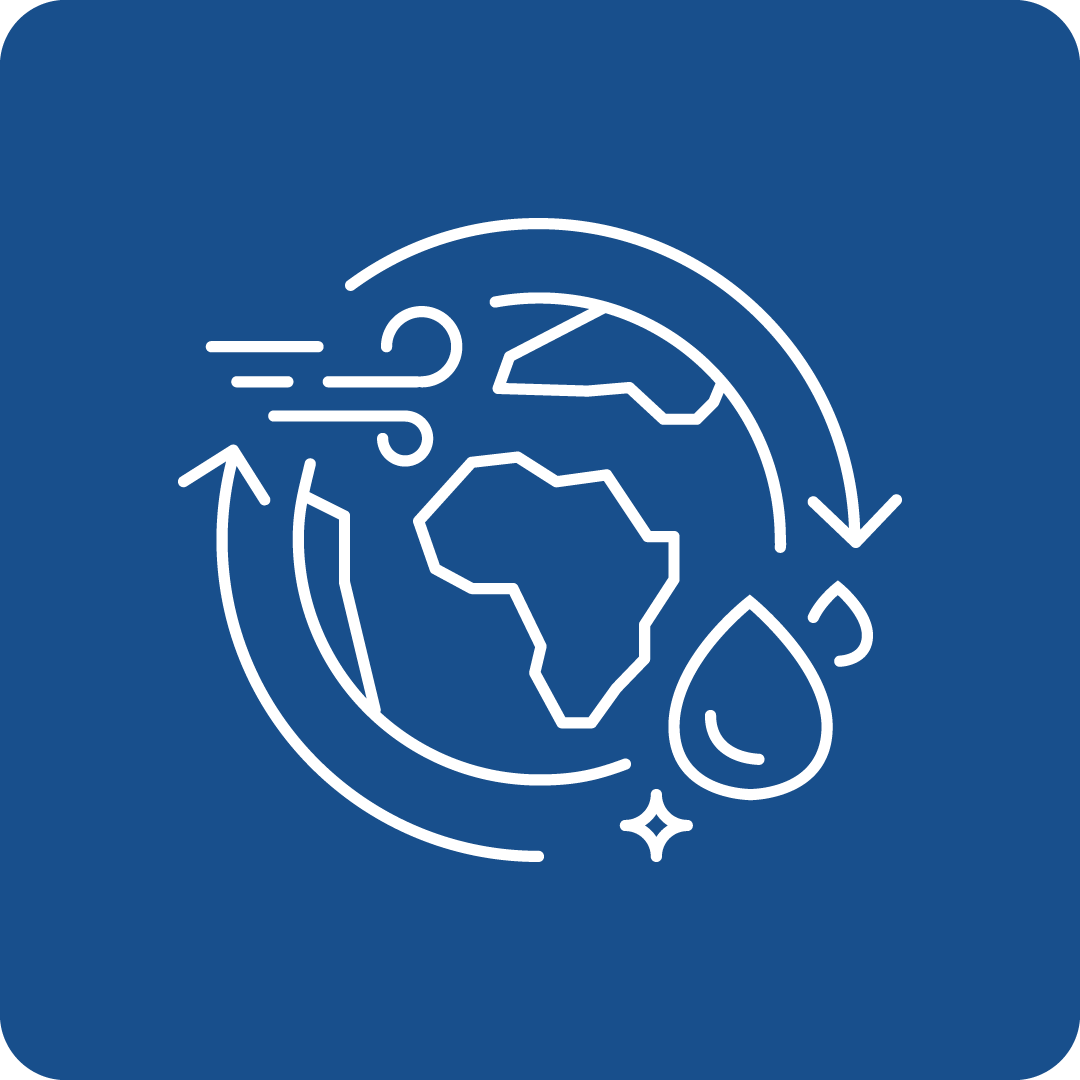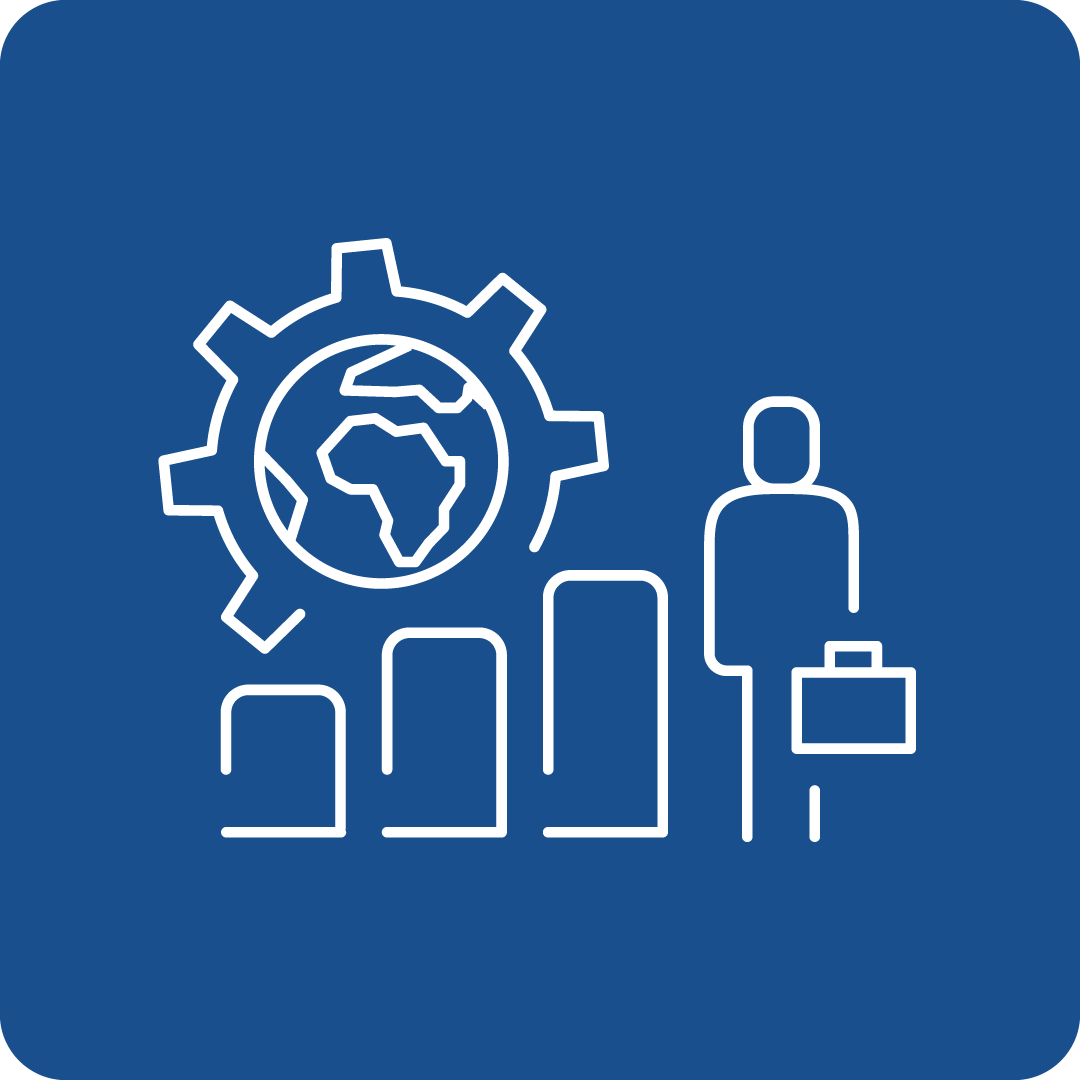Filter Search for grants
Call Navigation
Deadline expired
The deadline for this call has expired.
Call key data
Innovative Advanced Materials (IAMs) for product monitoring, smart maintenance and repair strategies in the construction sector (Innovative Advanced Materials for Europe partnership)
Funding Program
Horizon Europe: Cluster 4 - Digital, Industry and Space
Call number
HORIZON-CL4-2025-05-MATERIALS-42-two-stage
deadlines
Opening
22.05.2025
Deadline
23.09.2025 17:00
Funding rate
100%
Call budget
€ 30,000,000.00
Estimated EU contribution per project
€ 6,000,000.00
Link to the call
Link to the submission
Call content
short description
Proposals should develop new and/or improved Innovative Advanced Materials (IAMs) that increase recyclability, circularity and safety of construction materials reducing (raw) materials consumption.
Call objectives
Extend the lifetime of materials used in the construction sector (e.g. cement, concrete, composites, technical textiles, plaster board, pipes) for which durability is often limited by poor stability and low flexibility and/or by increasingly aggressive and changing environments. Extending a products’ life (use phase) is an important pillar of a solid sustainable and circular strategy because it reduces materials demands. In addition, new materials fit for the circular economy should be easily dismantlable into reusable or recyclable components. The actual condition and functional performance of products, components and materials should be monitored and assessed and smart maintenance and repair functions implemented, ideally at the level of individual products or components. Autonomous repair systems often use sensors to detect changes in the material's condition through physical principles or mechanical deformation. The smart (AI) exploitation of collected data enables real-time monitoring of the material's condition. The surfaces created in the building process are ideal for smart solutions incorporating ubiquitous electronic systems.
Multidisciplinary research activities should address at least two of the following:
- Develop strategies to accelerate the time-consuming performance evaluation step to greatly reduce the times to prototyping and then to market.
- Enhance sensor capabilities for tailored solutions through IAMs with extended physical sensor functionalities for mechanical-technological traits;
- Develop self-repairing and -healing materials for complex and resource-intensive structures, receptive to digital stimuli to retroactively influence material properties and integrating autonomous repair mechanisms to enhance their reliability (such as in composites, ceramics, coatings, technical textiles etc), extend their lifespan and enabling easy recycling;
- Develop (AI based) models like digital twins to utilize high-dimensional new sensor data and generate multimodal stimuli and functionalities for customised maintenance and repair plans, extending product lifetime economically and environmentally;
- Produce and share new knowledge on underlying multi-scale and multi-physics phenomena to better understand materials behaviour during their lifetime, develop and validate methodologies and suitable models to predict materials degradation (mechanical and/or environmental) and to assess the longevity of materials, components and products through accelerated testing and functional performance verification;
- Develop IAMs fit for modular off-site processing or 3D printing onsite.
read more
Expected effects and impacts
Proposals should develop new and/or improved IAMs that increase recyclability, circularity and safety of construction materials reducing (raw) materials consumption by:
- Increased durability and reliability and reduced maintenance requirements (e.g. self-cleaning and/or self-healing properties, self-protection, increased stress resistance and innovative protection treatments such as corrosion and/or erosion resistance, increased fatigue resistance);
- Support smart material functionalities for continuous monitoring and in-service inspections, e.g. through integrated sensors, with multifunctional features (such as asset management tracking, self-powering and/or self-sensing for several parameters).
In addition, all proposals should
- Use new digital technologies including data driven approaches to push the frontiers of designing and producing IAMs with new functionalities/performance, improve materials scalability and related processes and use analytical technologies and infrastructures to characterise the efficiency, quality and effectiveness of developed IAMs;
- Contribute to the availability of FAIR data and methods for safety and sustainability assessment of IAMs and for decision-making processes (at the design, engineering and end-of-life stage of IAMs and products);
- Explore possibilities to transfer and use developed IAMs or technologies in other sectors;
- Assess safety, sustainability and circularity of all components during the entire innovation cycle as well as how to decompose and sort for enhanced recyclability of all components at the end of life, in line with the safe and sustainable by design (SSbD) framework.
Proposals need to address both the IAM development and all the supporting technologies (digital and physical) needed (not existing yet) to cover the entire value chain (material development, validation, production, processing, use and end of life). Any existing technologies that do not require development or adaptation should be mentioned in the proposal.
Proposals should involve appropriate expertise in Social Sciences and Humanities (SSH), particularly regarding the acceptance of innovative construction materials for housing for maximized user experience and comfort. This may involve a perception analysis of these materials, resulting functionalities and the development of optimization strategies.
Proposals submitted under this topic should include a business case and exploitation strategy, as outlined in the introduction to this Destination.
Research should build on existing standards or contribute to standardisation of technologies encompassing sensing, self-repairing or self-healing materials. Interoperability for data sharing should be addressed, in accordance with the FAIR data principles. Projects should build on, or seek collaboration with, existing projects in EU Member States and Associated Countries and develop synergies with other relevant European, national or regional initiatives, funding programmes and platforms. Where relevant, projects are encouraged to take advantage of and connecting to European analytical research infrastructures and services.
Proposals could consider the involvement of the European Commission's Joint Research Centre (JRC), whose contribution could consist of providing added value on new solutions for advanced materials in construction, including the ability to dismount and reuse, multifunctionality, smart maintenance and enhanced circularity and safety.
International cooperation is encouraged, especially with Japan.
In this topic the integration of the gender dimension (sex and gender analysis) in research and innovation content is not a mandatory requirement.
This topic implements the co-programmed European Partnership Innovative Advanced Materials for the EU (IAM4EU). Proposals funded under this topic are part of the partnership portfolio and are expected to develop synergies with the related stakeholder community and contribute actively to the objectives of the partnership. The different stakeholder communities in IAM4EU are encouraged to coordinate amongst and across each other and foresee adequate resources for this as well as for the overall coordination with IAM4EU in the proposals.
read more
Expected results
Projects are expected to contribute to the following outcomes:
- Support the implementation of the Commission Communication on Advanced Materials for Industrial Leadership.
- Break frontiers between functional and structural materials by applying monitoring applications enabling infrastructure management such as tracking, self-powering and self-sensing to reduce maintenance costs by at least 30% compared to the state-of-the-art.
- Reduce the resources (materials and energy) needed for constructions and lower environmental impacts by applying innovative advanced materials (IAMs) with improved performance of structural or functional components, combining longevity and efficiency, repairability and circularity (improving overall materials circularity by at least 30%);
- Proof of concept of the ‘safe and sustainable by design’ (SSbD) framework during the development phase of the new IAMs to avoid use of hazardous substances and lower environmental impact;
- Promote industrial uptake of IAMs by facilitating scalability and/or integration into leaner industrial production processes;
- Support acceptance of innovative construction materials for housing to achieve maximized user experience and comfort.
read more
Eligibility Criteria
Regions / countries for funding
Moldova (Moldova), Albania (Shqipëria), Armenia (Հայաստան), Bosnia and Herzegovina (Bosna i Hercegovina / Босна и Херцеговина), Canada, Faeroes (Føroyar / Færøerne), Georgia (საქართველო), Iceland (Ísland), Israel (ישראל / إِسْرَائِيل), Kosovo (Kosova/Kosovë / Косово), Montenegro (Црна Гора), New Zealand (Aotearoa), North Macedonia (Северна Македонија), Norway (Norge), Serbia (Srbija/Сpбија), Tunisia (تونس /Tūnis), Türkiye, Ukraine (Україна), United Kingdom
eligible entities
EU Body, Education and training institution, Non-Profit Organisation (NPO) / Non-Governmental Organisation (NGO), Other, Private institution, incl. private company (private for profit), Public Body (national, regional and local; incl. EGTCs), Research Institution incl. University, Small and medium-sized enterprise (SME)
Mandatory partnership
Yes
Project Partnership
To be eligible for funding, applicants must be established in one of the following countries:
- the Member States of the European Union, including their outermost regions
- the Overseas Countries and Territories (OCTs) linked to the Member States
- countries associated to Horizon Europe - see list of particpating countries
Only legal entities forming a consortium are eligible to participate in actions provided that the consortium includes, as beneficiaries, three legal entities independent from each other and each established in a different country as follows:
- at least one independent legal entity established in a Member State; and
- at least two other independent legal entities, each established in different Member States or Associated Countries.
Any legal entity, regardless of its place of establishment, including legal entities from non-associated third countries or international organisations (including international European research organisations) is eligible to participate (whether it is eligible for funding or not), provided that the conditions laid down in the Horizon Europe Regulation have been met, along with any other conditions laid down in the specific call topic.
A ‘legal entity’ means any natural or legal person created and recognised as such under national law, EU law or international law, which has legal personality and which may, acting in its own name, exercise rights and be subject to obligations, or an entity without legal personality.
other eligibility criteria
Specific cases:
- Affiliated entities (i.e. entities with a legal or capital link to a beneficiary which participate in the action with similar rights and obligations to the beneficiaries, but which do not sign the grant agreement and therefore do not become beneficiaries themselves) are allowed, if they are eligible for participation and funding.
- Associated partners (i.e. entities which participate in the action without signing the grant agreement, and without the right to charge costs or claim contributions) are allowed, subject to any conditions regarding associated partners set out in the specific call conditions.
- Entities which do not have legal personality under their national law may exceptionally participate, provided that their representatives have the capacity to undertake legal obligations on their behalf, and offer guarantees to protect the EU’s financial interests equivalent to those offered by legal persons.
- Legal entities created under EU law (EU bodies) including decentralised agencies may be part of the consortium, unless provided for otherwise in their basic act.
- International European research organisations are eligible to receive funding. International organisations with headquarters in a Member State or Associated Country are eligible to receive funding for ‘Training and mobility’ actions or when provided for in the specific call/topic conditions. Other international organisations are not eligible to receive funding, unless provided for in the specific call/topic conditions, or if their participation is considered essential for implementing the action by the granting authority.
- Joint Research Centre (JRC)— Where provided for in the specific call conditions, applicants may include in their proposals the possible contribution of the JRC but the JRC will not participate in the preparation and submission of the proposal. Applicants will indicate the contribution that the JRC could bring to the project based on the scope of the topic text. After the evaluation process, the JRC and the consortium selected for funding may come to an agreement on the specific terms of the participation of the JRC. If an agreement is found, the JRC may accede to the grant agreement as beneficiary requesting zero funding or participate as an associated partner, and would accede to the consortium as a member.
- Associations and interest groupings — Entities composed of members (e.g. European research infrastructure consortia (ERICs)) may participate as ‘sole beneficiaries’ or ‘beneficiaries without legal personality’. However, if the action is in practice implemented by the individual members, those members should also participate (either as beneficiaries or as affiliated entities, otherwise their costs will NOT be eligible.
- EU restrictive measures — Entities subject to EU restrictive measures under Article 29 of the Treaty on the European Union (TEU) and Article 215 of the Treaty on the Functioning of the EU (TFEU) as well as Article 75 TFEU, are not eligible to participate in any capacity, including as beneficiaries, affiliated entities, associated partners, third parties giving in-kind contributions, subcontractors or recipients of financial support to third parties (if any).
- Legal entities established in Russia, Belarus, or in non-government controlled territories of Ukraine — Given the illegal invasion of Ukraine by Russia and the involvement of Belarus, there is currently no appropriate context allowing the implementation of the actions foreseen in this programme with legal entities established in Russia, Belarus, or in non-government controlled territories of Ukraine. Therefore, even where such entities are not subject to EU restrictive measures, such legal entities are not eligible to participate in any capacity. This includes participation as beneficiaries, affiliated entities, associated partners, third parties giving in-kind contributions, subcontractors or recipients of financial support to third parties (if any). Exceptions may be granted on a case-by-case basis for justified reasons.
With specific regard to measures addressed to Russia, following the adoption of the Council Regulation (EU) 2024/1745 of 24 June 2024 (amending Council Regulation (EU) No 833/2014 of 31 July 2014) concerning restrictive measures in view of Russia’s actions destabilising the situation in Ukraine, legal entities established outside Russia but whose proprietary rights are directly or indirectly owned for more than 50% by a legal person, entity or body established in Russia are also not eligible to participate in any capacity. - Measures for the protection of the Union budget against breaches of the principles of the rule of law in Hungary — Following the Council Implementing Decision (EU) 2022/2506, as of 16 December 2022, no legal commitments can be entered into with Hungarian public interest trusts established under the Hungarian Act IX of 2021 or any entity they maintain. Affected entities may continue to apply to calls for proposals and can participate without receiving EU funding, as associated partners, if allowed by the call conditions. However, as long as the Council measures are not lifted, such entities are not eligible to participate in any funded role (beneficiaries, affiliated entities, subcontractors, recipients of financial support to third parties, etc.).In case of multi-beneficiary grant calls, applicants will be invited to remove or replace that entity in any funded role and/or to change its status into associated partner. Tasks and budget may be redistributed accordingly.
Additional information
Topics
Relevance for EU Macro-Region
EUSDR - EU Strategy for the Danube Region, EUSBSR - EU Strategy for the Baltic Sea Region, EUSALP - EU Strategy for the Alpine Space, EUSAIR - EU Strategy for the Adriatic and Ionian Region
UN Sustainable Development Goals (UN-SDGs)
![]()
![]()
![]()
Additional Information
Applications must be submitted electronically via the Funders & Tenders Portal electronic submission system (accessible via the topic page in the Search Funding & Tenders section). Paper submissions are NOT possible.
Applications must be submitted using the forms provided inside the electronic submission system (not the templates available on the topic page, which are only for information). The structure and presentation must correspond to the instructions given in the forms.
Applications must be complete and contain all parts and mandatory annexes and supporting documents.
The application form will have two parts:
- Part A (to be filled in directly online) contains administrative information about the applicant organisations (future coordinator and beneficiaries and affiliated entities), the summarised budget for the proposal and call-specific questions;
- Part B (to be downloaded from the Portal submission system, completed and then assembled and re-uploaded as a PDF in the system) contains the technical description of the project.
Annexes and supporting documents will be directly available in the submission system and must be uploaded as PDF files (or other formats allowed by the system).
The page limit for the Part B for the first stage of the 2-stage call is 13 pages. In order to include a business case and exploitation strategy, as outlined in the introduction to this Destination, the page limit in part B of the General Annexes is exceptionally extended by 3 pages.
This topic is part of the blind evaluation pilot under which first stage proposals will be evaluated blindly. Applicants submitting a proposal under the blind evaluation pilot must not disclose their organisation names, acronyms, logos nor names of personnel in the proposal abstract and Part B of their first-stage application.
Eligible costs will take the form of a lump sum as defined in the Decision of 7 July 2021 authorising the use of lump sum contributions under the Horizon Europe Programme – the Framework Programme for Research and Innovation (2021-2027) – and in actions under the Research and Training Programme of the European Atomic Energy Community (2021-2025). It is mandatory to submit a detailed budget table using the template available in the Submission system.
Activities are expected to start at TRL 3 and achieve TRL 5-6 by the end of the project.
Call documents
Horizon Europe Work Programme 2025 Cluster 4 - Digital, Industry and SpaceHorizon Europe Work Programme 2025 Cluster 4 - Digital, Industry and Space(kB)
Contact
To see more information about this call, you can register for free here
or log in with an existing account.
Log in
Register now


